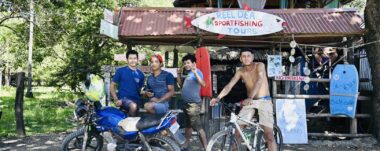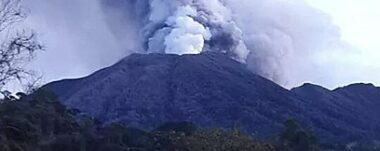In the Heart of the Southern Zone of Costa Rica

The southern zone of Costa Rica is one of the most beautiful places in the country, known for its flora and fauna. Its great extension and its altimetry, account for its wide biodiversity, in addition to the influence it receives from the two sides, Pacific and Atlantic, make this region one of the most impressive of the country.
Also known as the Brunca Region, the southern zone comprises the southwestern portion of the country, from Playa Dominical to the Osa Peninsula and Punta Burica, on the border with Panama. With diverse forests, it manages to cover different ecosystems along with its great location between the Pacific Ocean and the Talamanca Mountain Range.
The tourist routes were conceived with one objective: to allow visitors to admire landscapes, rediscover historical sites and enjoy adventures. These areas with diverse attractions, are perfect to admire the natural geography.
Eduardo Granados, director of Osa Verde y Mar, has developed during the last few years different tourist, sports and cultural activities that begin with a tour of this region and then walk through three destinations adjacent to Parque la Amistad to admire a glimpse of the beauty of the country. This tour consists of three important stations:
Olan, the Land that Time Forgot.
Its first settlers arrived in 1972 looking for land for cattle ranching. Currently, the village still has a limited population of about 90 people. The chapel is the most emblematic point of the place, where there are some cabins for visitors, a library, a dining room and a viewpoint. It is a construction that imitates a small town with an oratory, surrounded by forest and many colors provided by the flowers. In the place, the visitors have contact with the peace and sensations that it offers. To get there you must travel at least 30 kilometers by gravel road from Buenos Aires. The owner, John Howard, has created a thematic property with political-religious controversies, besides, there has been controversy due to the occupation of indigenous territory.
Valle del Silencio (Silence Valley)
A little further south, entering San Vito through Paso Real, we find Las Tablas crossing, from there we move to El Carmen and Altamira de Biolley. The main activities of these communities are cattle raising, coffee and other agricultural products. Upon arrival at Altamira, the community meets with a group of neighbors, specialists of the region, organized to develop a 15 kilometers hike of approximately 8 hours to the Silencio Valley, right at the meeting point of the two slopes. This is due to the different altitudinal levels. You start in the pre-mountain forests of the Pacific slope, up to the oak cloud forests on the Caribbean slope. Although not much fauna is observed, birds, plants and reptiles have a very high endemism. It is one of the most beautiful and little known hikes in Costa Rica.
Cerro Kamuk
Cerro Kamuk is a mountain at the base of the hills and mountains of La Amistad International Park. Returning to the main entrance road to San Vito through Paso Real, where you will find the Clavera Crossing, you will travel to Potrero Grande. Here, you can enter the National Park through the ranger station. From this point on, a 5-day experience begins up to Cerro Kamuk, located on the Atlantic slope. The present fauna and the wide collection of flora in conservation, along with areas not explored by humans, make this experience unique. Also, the nearby communities surprise with the development of alternative products such as blackberry production and derivatives.
Cerro Kamuk and Valle del Silencio are located within La Amistad International Park, one of those special places, known for its charm and beauty. Declared a UNESCO World Heritage Site and Biosphere Reserve, it is the largest protected wilderness area in Costa Rica.
These tourist itineraries, developed by Eduardo Granados, combine the necessary infrastructure, which can range from small food outlets or caterers open to the public, to restaurants and hotels. They are in charge of creating unique vacation opportunities, that is to say, to encourage adventure far from the paved roads that we commonly know.
These mountain resorts have incredible panoramic views and the surrounding villages make the environment warm, creating an atmosphere that connects with nature and at the same time shows the daily life in these remote areas. The region has large areas without electricity and although that may be unattractive, it is what characterizes this place the most since stargazing and tourism ventures have been responsible for identifying this lack as a strength.
Authors: Sensorial Sunsets in collaboration with Eduardo Granados.
Navigate articles






